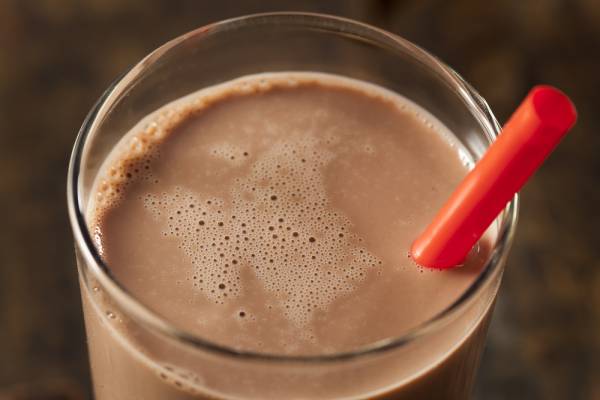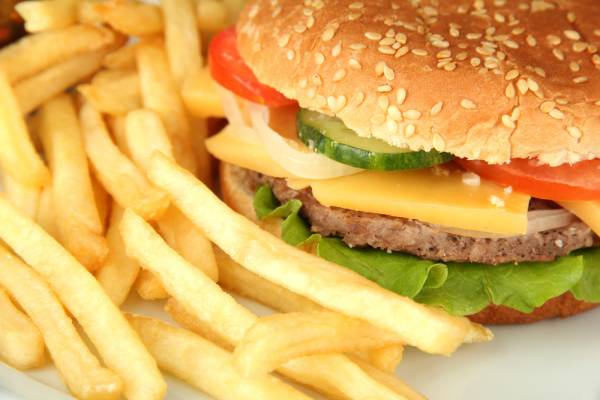There is no question reasonable post-workout nutritional intake is necessary. You cannot drain your tank with exhaustive exercise and not refill it. Well, you could, but good luck if you don’t give it a refill. The question really is, what do you eat and when, right?
Timing and Nutrition
The time factor of post-workout nutrition can go a number of ways. 24 hours? 48 hours? 72 hours? It depends. The nutrition factor can go all ways as well. What’s best to eat? Most agree within a reasonable passing of time post-workout nutrients must go in. It’s the what-to-eat that keeps the nutritional supplement manufactures in business and registered dieticians debating.
It’s time for some interesting facts and a brief review of energy replenishment:
- The average person stores between 450 and 550 grams of glycogen (carbohydrates, “carbs”) in the muscles and liver.
- Hard exercise depletes these stores (muscle = 65 to 85% and liver = 85 to 95%).
- An all-out twenty-minute workout session can deplete glycogen levels to 50% of maximum capacity. Imagine the hole dug in a demanding one-hour session. Deep.
- The preferred sources of carbs immediately post-workout are the higher glycemic, quicker-digesting simple sugars.
- The replenishment rate can vary from two to five percent per hour post-workout depending upon the amount of carbs consumed. Consuming 600 or more grams (50 grams every two hours) tops out the rate at five percent. Consuming more makes no difference.
- It takes at least twenty hours to fully replenish glycogen stores. This has huge implications for two-per-day training sessions. You can eat a slew of post-workout carbs or drink the latest recovery product, but you still cannot speed up your biology. A demanding initial training session in the morning will not allow for maximum ability if a late afternoon or evening session is on the docket. You can surely give 100% effort, but your output will not equal a true 100% effort.
Recovery Nutrition and Chocolate Milk
Chocolate milk has been touted as the epitome of inexpensive post-workout recovery options. It contains fast digesting carbs and protein – the perfect combination to begin the recovery process. It’s inexpensive as compared to some over-hyped concoctions sold via keen marketing methods, and you can obtain it at your local grocery store.
On the other side are the more expensive designer recovery drinks. They contain basically the same ingredients as chocolate milk (along with other purportedly magical chemicals). And while serving of chocolate milk may only cost fifty cents, a serving of the latest recovery drink break-through may cost $2.00 or more.
Do the math. If you consumed chocolate milk post-training, a one-month period of training four days per week would only tap your bank account for under $10.00. Use the latest recovery mixture sold at the supplement shack and it could cost you upwards of $35.00 each month.

Fast Food Is a Viable Option for Post-Workout Recovery
I know, it sounds like a step back to the dark ages by even mentioning fast food and post-workout recovery in the same sentence. But toss your intuition aside for a few minutes.
A thesis recently published at the University of Montana studied the benefits of glycogen recovery via typical fast-food choices compared to popular manufactured recovery supplements. This particular study used eleven active males between the ages of eighteen and forty who performed ninety-minute glycogen-depleting workouts on a cycle ergometer.
The ninety-minute workouts were performed twice over a seven-day period. Each workout was followed by a four-hour recovery period, then a 12.5 miles/20 kilometer (12.5m/20k) cycle event. To assure workout protocol familiarity, the subjects completed two trial workouts on the cycle ergometer on two different days, both covering 12.5m/20k distance.
The workout consisted of:
- 10-minute warm up at 55% of maximum power (MP) output
- 10 intervals of two minutes at 80% MP followed by four minutes at 50% MP.
- Eight minutes at 60% MP followed by 12 minutes at 50% MP
During the four-hour recovery, the subjects rested in a seated position and were given either a similar carb-content fast food meal or sport supplement. The carb amount for each feeding was between .54 and .81 grams per pound of body weight.
Muscle biopsies were collected from the quadriceps immediately following the workout and four hours post-workout. Feedings occurred immediately post-workout after the muscle biopsy and at two hours post-workout. Blood samples for insulin, glucose, and lipids were obtained at immediately following the workout, and then thirty minutes, one hour, two hours, 2.5 hours, three hours, and four hours post-workout.

The 12.5m/20k test was completed following the final muscle biopsy. The subjects were instructed to complete the workout as fast as possible. Subjects were instructed to avoid other exercise and record all dietary intake 24 hours prior to each test day.
The study found:
- No differences in blood glucose response, insulin response, and glycogen replenishment between the fast food (FF) and supplement (S) intake.
- No differences between FF and S on cycle ergometer ability. The 12.5m/20k workouts following the four-hour recovery did not regress in terms of maximum power (MP) when compared to the two initial trial workouts when the subjects were completely rested.
- Both FF and S feedings during the four-hour recovery allowed the subjects to regain adequate glycogen replenishment, 62% for FF and 60% for S.
From this we can conclude that muscle glycogen replenishment post-workout can vary in regards to the frequency and amount of carbs ingested. However, provided a consistent balance of micronutrients are present, the type of carbs ingested does not hinder muscle recovery and ensuing workout performance.
The reality is a wide variety of carb options exist post-workout when the goal is simply immediate muscle glycogen replenishment. Regarding your hard-earned money, it looks like it’s not necessary to purchase the high-priced recovery products. In the short term, inexpensive fast food appears to suffice as a viable glycogen replenishment choice following high-effort training sessions.
References:
1. Tardie, Gregory, “Glycogen Replenishment After Exhaustive Exercise,” The Sport Journal, published by the United States Sports Academy, February 11, 2008, ISSN: 1543-9518.
2. Aragon, Alan, “An Objective Comparison of Chocolate Milk and Surge Recovery,”Body Recompensation blog.
3. Lynch, Shannan, “The Differential Effects of a Complex Protein Drink Versus Isocaloric Carbohydrate Drink on Performance Indices Following High-intensity Resistance Training: A Two-arm Crossover Design,” Journal of the International Society of Sports Nutrition.
4. Peschek, Katelyn, R. Pritchett, E. Bergman, and K.Pritchett, “The Effects of Acute Post Exercise Consumption of Two Cocoa-Based Beverages with Varying Flavanol Content on Indices of Muscle Recovery Following Downhill Treadmill Running,” Nutrients 2014, 6(1), 50-62; doi:10.3390/nu6010050
5. Cramer, Michael J., “Fast Food Results in Similar Post-exercise Glycogen Recovery and Exercise Performance Compared to Sport Supplements,” Thesis presented in partial fulfillment of the requirements for the degree of Master of Science in Applied Exercise Science, The University of Montana.
Photos courtesy of Shutterstock.






